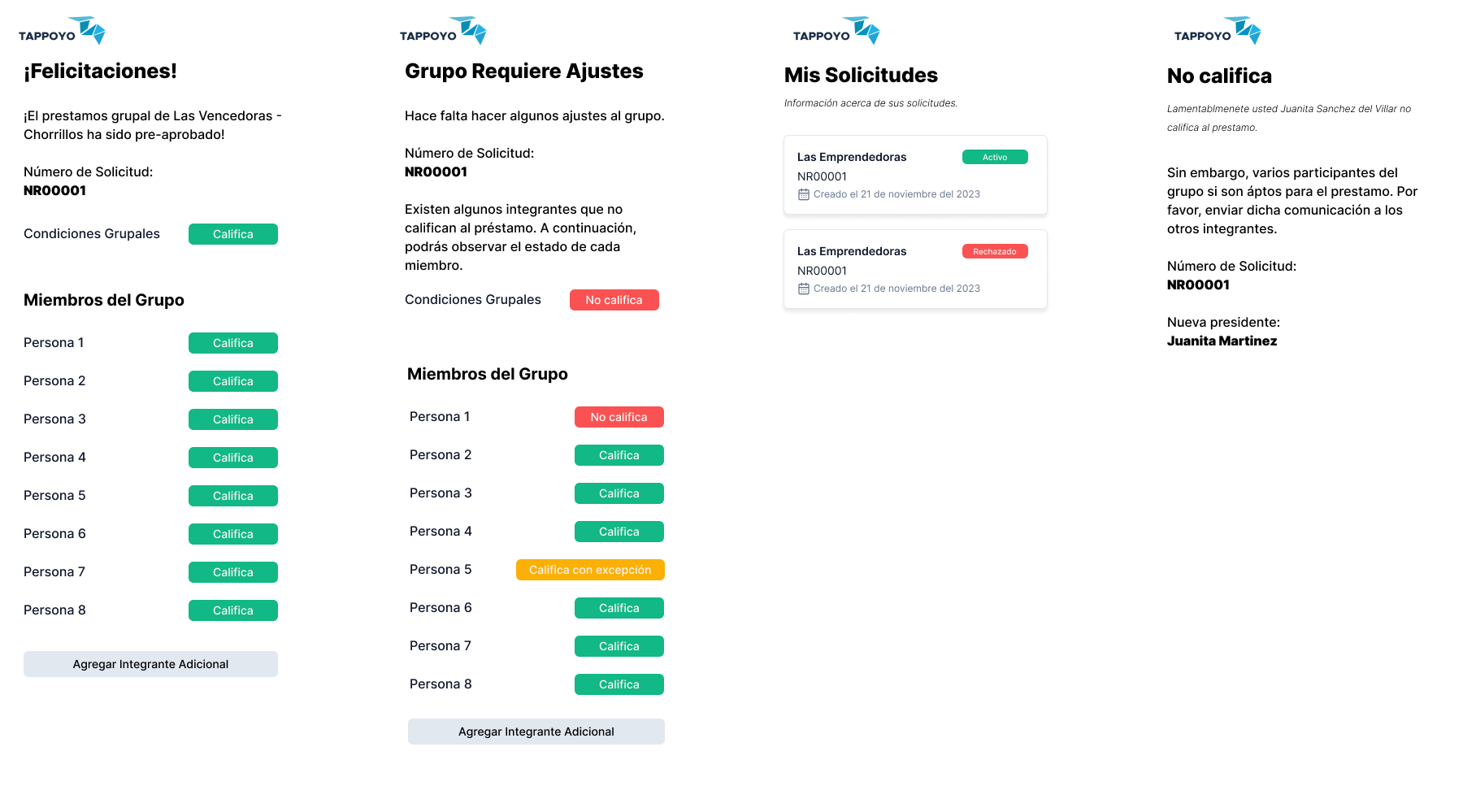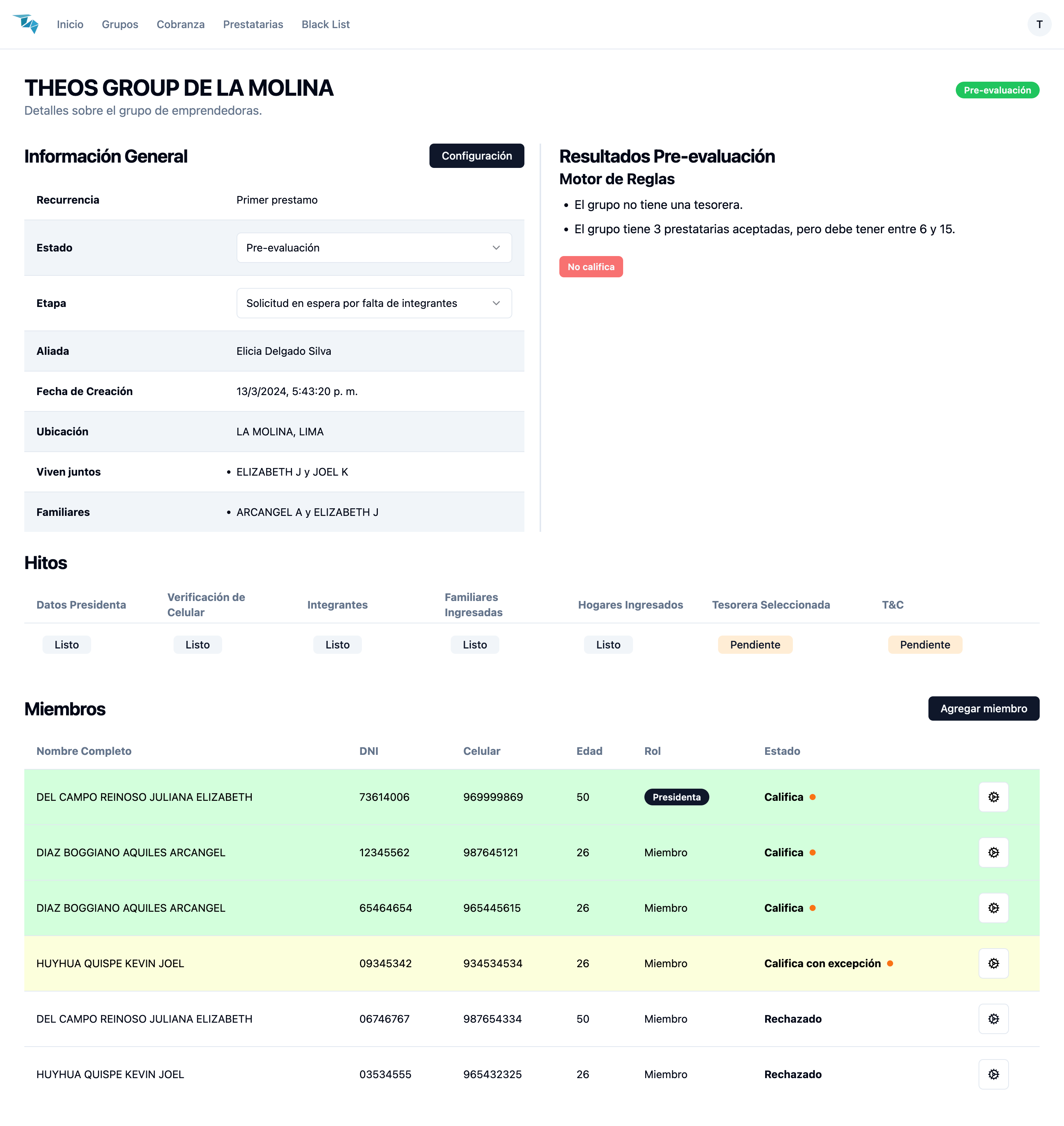Tappoyo, recognized by Forbes Peru as one of the TOP 100 Startups in Peru, is driven by a profound objective: to foster a more inclusive society through the power of finance and technology. Their approach is simple yet transformative: they extend financial services to marginalized sectors, democratizing access to credit and promoting financial literacy. Their flagship product, 'Mujeres PRO', serves as a bridge, connecting investors with women entrepreneurs who have been denied loans by traditional financial institutions. They have empowered over 2500 entrepreneurs to date, injecting a significant 45% into the Peruvian financial system.
The Old Process
Previously, the onboarding process was time-consuming. Groups of 8-15 entrepreneurs would submit a traditional form, which staff manually reviewed, taking 20-30 minutes per group. This review included conducting background checks and verifying several pre-designated criteria. With an acceptance rate of around 10%, a considerable amount of time was wasted pre-evaluating groups that were ultimately rejected.
Identifying Pain Points
The initial pain point was the extensive time spent on pre-evaluations. To address this, we brainstormed a technological solution to streamline the process.
Automating the Pre-Approval Process
We decided to automate the "pre-approved" process. After collecting client requirements and thorough brainstorming sessions, we developed the project's first iteration within three months.
The automated solution involved creating a form to collect relevant data (picture below) and running processes in the background.


Here’s how it works:
- Form Submission: A group leader completes a form with the data of all group members, providing only their names and personal identification IDs.
- Background Checks: We call a third-party background check service for each entrepreneurs and store the results.
- Rule Evaluation: We apply a set of predefined, confidential rules to each entrepreneur, checking criteria such as age, name verification, and debt status with Peruvian State institutions.
- Group Evaluation: After evaluating each entrepreneur, we apply additional rules to the group, such as checking for family members and ensuring enough approved members.
- Store the results: Now, we can conclude whether the group has been pre-approved or not!
Interesting note: The third-party background check API can take up to 10 seconds per entrepreneur. To manage this, the analyses are conducted asynchronously via event calls, ensuring the forms remain non-blocking.
After completing the new form, the entrepreneurs can visualize if they were "pre-approved" or not, with the relevant detail per person:

Our Backoffice
Our backoffice requirements were straightforward: visualize and edit existing data.

We developed a central panel (screenshot above) for the onboarding team, featuring:
- "Información General": Aggregates general information about the group, including location, family composition, and the group's current state.
- "Resultados Pre-Evaluación": Explains why a group was rejected, detailing the non-compliant checks.
- "Hitos": Tracks the completion status of each registration form page.
- "Miembros": Displays each group member's status with color codes: green for approved, yellow for pending analysis, and red for rejected.
Additionally, the system allows adding members, changing group configurations, manually running rules, and analyzing checks per member.
Personal Takeaways
What aspect of the technological implementation presented the most significant challenge, and how did we overcome it?
The most significant challenge in our technological implementation was integrating the "background check" service effectively. This was crucial as it involved collaborating with an external company for accessing client financial data. Our main difficulty was ensuring that our system could handle disruptions in the service smoothly. To address this, we set up reliable retry mechanisms to manage failed events efficiently. Additionally, dealing with a 10-second response time was a major hurdle. However, we managed this by organizing asynchronous event handling behind the scenes. While the frontend interacted with the service seamlessly, our backend processed these events systematically to maintain a smooth workflow.
Reflecting on the project, what aspect of the technological solution are you most proud of, and why?
Reflecting on the project, one aspect of the technological solution that stands out is our method of redirecting users through the form submission process. The challenge we faced was ensuring that users would be redirected to the appropriate step based on their progress upon returning to the form. To address this, we created a specific table to track the status of each user's form completion journey. Additionally, we implemented middleware to determine the correct URL for redirection based on the form status: regardless of the URL accessed within our registration form, our system efficiently redirects users to the required step, contributing to a smooth and intuitive user experience.
As a technologist, what excites you most about the potential future developments or enhancements to this automated pre-approval system?
What fascinated me most about this project was the impressive speed at which we developed such a complex solution. We navigated through various moving parts, including external systems, two distinct applications, data persistence, retry mechanisms, redirection, and queues, among other technologies. This reflects how quickly things move in today's development landscape! With so many tools at our disposal, we can juggle different concepts and effortlessly put the right tools into action for each task. However, it's essential to note the importance of carefully selecting and analyzing the trade-offs of each technological choice.
Next Steps
Since launching these functionalities in March 2024, we have been working on a money collection control platform to efficiently track the installments and debts of current groups.
If you’re inspired by our work and have a project idea that can make a difference, don’t hesitate to contact us. We’re eager to collaborate and bring your vision to life: team@atlastechhub.com
Project Team: Maor, Eric & Christian